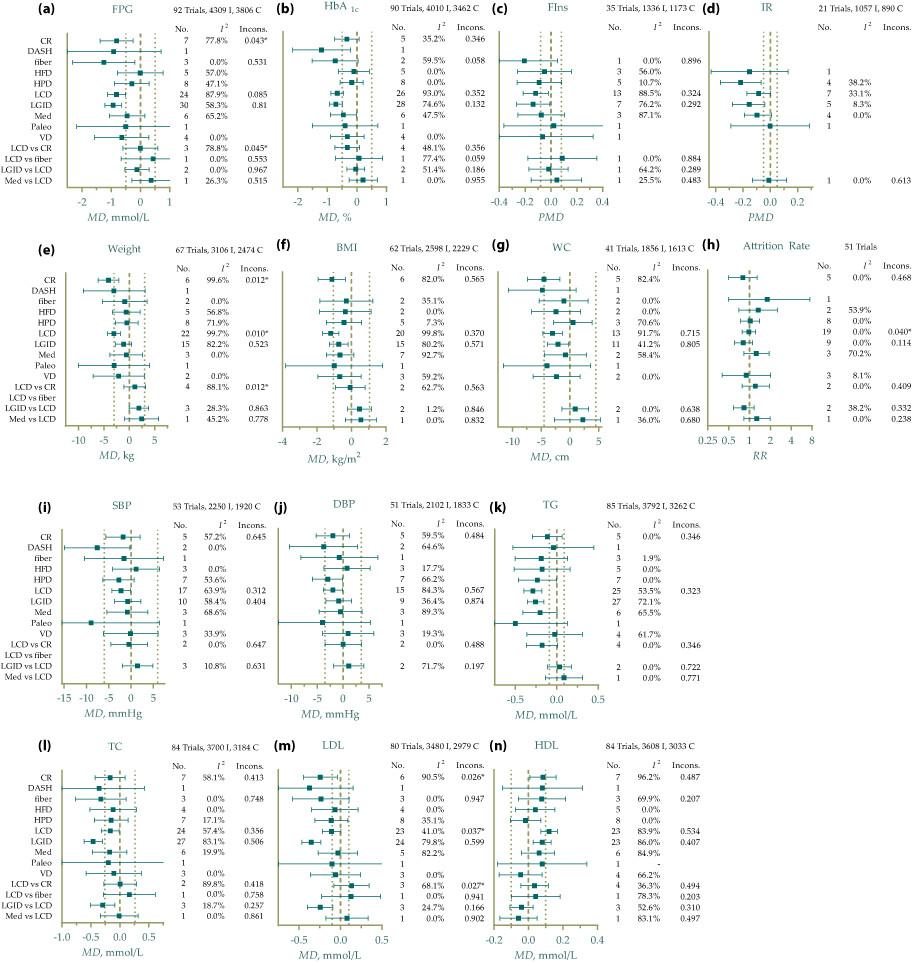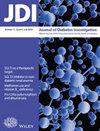Comparative efficacy of different eating patterns in the management of type 2 diabetes and prediabetes: An arm-based Bayesian network meta-analysis
Abstract
Aims/Introduction
Diet therapy is a vital approach to manage type 2 diabetes and prediabetes. However, the comparative efficacy of different eating patterns is not clear enough. We aimed to compare the efficacy of various eating patterns for glycemic control, anthropometrics, and serum lipid profiles in the management of type 2 diabetes and prediabetes.
Materials and Methods
We conducted a network meta-analysis using arm-based Bayesian methods and random effect models, and drew the conclusions using the partially contextualized framework. We searched twelve databases and yielded 9,534 related references, where 107 studies were eligible, comprising 8,909 participants.
Results
Eleven diets were evaluated for 14 outcomes. Caloric restriction was ranked as the best pattern for weight loss (SUCRA 86.8%) and waist circumference (82.2%), low-carbohydrate diets for body mass index (81.6%), and high-density lipoprotein (84.0%), and low-glycemic-index diets for total cholesterol (87.5%) and low-density lipoprotein (86.6%). Other interventions showed some superiorities, but were imprecise due to insufficient participants and needed further investigation. The attrition rates of interventions were similar. Meta-regression suggested that macronutrients, energy intake, and weight may modify outcomes differently. The evidence was of moderate-to-low quality, and 38.2% of the evidence items met the minimal clinically important differences.
Conclusions
The selection and development of dietary strategies for diabetic/prediabetic patients should depend on their holistic conditions, i.e., serum lipid profiles, glucometabolic patterns, weight, and blood pressure. It is recommended to identify the most critical and urgent metabolic indicator to control for one specific patient, and then choose the most appropriate eating pattern accordingly.


 求助内容:
求助内容: 应助结果提醒方式:
应助结果提醒方式:


